This article was co-authored by Ken Breniman, LCSW, C-IAYT and by wikiHow staff writer, Jennifer Mueller, JD. Ken Breniman is a Licensed Clinical Social Worker, Certified Yoga Therapist and Thanatologist based in the San Francisco Bay Area. Ken has over 15 years experience of providing clinical support and community workshops utilizing a dynamic combination of traditional psychotherapy and yoga therapy. He specializes in eclectic non-denominational yoga guidance, grief therapy, complex trauma recovery and mindful mortal skills development. He has a MSW from Washington University in St. Louis and an MA Certification in Thanatology from Marian University of Fond du Lac. He became certified with the International Association of Yoga Therapists after completing his 500 training hours at Yoga Tree in San Francisco and Ananda Seva Mission in Santa Rosa, CA.
There are 10 references cited in this article, which can be found at the bottom of the page.
wikiHow marks an article as reader-approved once it receives enough positive feedback. In this case, several readers have written to tell us that this article was helpful to them, earning it our reader-approved status.
This article has been viewed 100,187 times.
Raja Yoga is a type of meditation. Thought of as the "royal path," it trains you to use your mind to become self-actualized. Once it is learned with sincerity, you may find self-control, discipline, concentration, peace of mind and inner joy. Daily meditation can provide you a lifetime of benefits, including reduced stress, lessened attachment to material objects, and complete self-realization.[1]
Steps
Practicing Meditation
-
1Find a quiet place. When you're just starting a meditation practice, it's best to go somewhere with minimal distractions. Being out in nature can be tranquil, or you might find a secluded part of your home.[2]
- Try to find the best time of day. Early morning typically is a good time to meditate, and you can carry the peace with you throughout the day. It's also usually quiet at that time.
- When you first start, you may find it helpful to have some soft music playing in the background, or listening through earphones.
- You also can search online for guided meditation tracks that are designed to help you focus when you're new to the practice.
-
2Sit comfortably. Raja yoga meditation is done from a seated position. A simple cross-legged position is fine, or you can even sit in a chair if you need that support. Just make sure you're comfortable and that you feel stable.[3]
- When in cross-legged position, press your hip bones down and reach up through the crown of your head. Your shoulders should drop down your back with your chest opened. Make sure your spine is neutral. Don't arch your back or lean back or forward.
- It may help to place a folded blanket or rolled towel behind or under you to help with your posture and make you more comfortable.
- Allow yourself to notice each of your senses, like the feeling of your feet on the floor, the sounds of your air conditioner, or the scent of a candle in the room.[4]
Advertisement -
3Bring your attention into the present. Raja yoga traditionally is done with your eyes open. When you're just starting, however, you may need to close your eyes so that you can center your mind.[5]
- Pick a focal point to watch while you're doing yoga. That can help you shut out any distractions that might be around you. For instance, you might pick a flower on a shelf, or you could light a candle and focus your eyes on the flame.[6]
- Try to keep your eyes open at first, then close them if you're having difficulty or get distracted too easily. However, you might notice it's harder to shut out random thoughts or feelings if your eyes are closed.[7]
-
4Withdraw your attention from sounds and everything that is around you. Turn your attention to your breathing, or to your other point of focus, such as a candle in front of you. Allow your thoughts to pass without judgement.[8]
- Particularly when you're just starting, your mind will probably try to throw all kinds of things at you. As you relax, things may come to mind that you'd forgotten throughout the day. Simply acknowledge those thoughts and return to your breath or point of focus.
- Observe without judging or criticizing yourself or your mind. Don't fault or blame yourself if it takes you awhile to get settled. Once you get settled, if another thought comes, have patience. Acknowledge the thought and allow the thought to pass, and then return to your breath or point of focus.
-
5Create a peaceful thought. As your thoughts start to flow, set an intention for your practice. Let that thought be your awareness as you sit in meditation. It could be related to some struggle you're currently having, or just a general affirmation.[9]
- For example, your thought might be "I am a peaceful soul." Try to empty your mind to the point that this is the only thought that exists.
- Your thought may be more directed to your personal circumstances. For example, if you are currently undergoing some uncertainty, such as turmoil at work, you might make your thought something like "my well-being is not attached to any outcome."
-
6Continue to create and experience being peaceful. As you fall deeper into a meditative state, your thought will bloom into a feeling that radiates through your entire being. Your understanding and feelings will combine to produce a profound sense of realization.[10]
- For example, if your original thought was "I am a peaceful soul," you can nurture that thought by repeating things such as "I am a peaceful soul...I am a peaceful being...Peace is my original nature."
-
7Carry that peace with you. When your meditation is over, try to hold on to the inner peace you found during meditation as you go through your day. If you feel the peace slipping away, take a few moments if you can for a brief meditation to re-center yourself.[11]
- Over time and with practice, you will awaken into a more profound state of well-being. You will be able to focus and concentrate better because you are centering and grounding yourself through your practice.
- If you feel stressed or overwhelmed during the day, try to find a place where you can retreat, even if only for a minute. Take several deep breaths and focus on your breathing until you find your inner calm.
Doing Hatha Yoga Asanas
-
1Focus on your breath. Deep, focused breathing is the heart of hatha yoga practice. To begin practicing correct breath, sit in a comfortable position and begin to breathe deeply in through your nose and out through your mouth.[12]
- As you inhale, lift your chest and allow your belly to expand. Think of the air filling your lungs from the bottom all the way to the top.
- When you exhale, press your navel towards your spine and press the air out of your lungs slowly and steadily. Think about the air at the top of your lungs leaving first, then the next layer, and so on. Make a whispered "ha" sound in the back of your throat as you exhale. With practice, you can exhale through your nose while still making this sound in your throat.
- As you get more skilled, you can try to find a pause after each inhalation and each exhalation, rather than rushing to breathe. In the pause after an inhale, recognize how full of life-giving air you are. After each exhale, feel the opening of space.
-
2Get the props you need. While technically you don't need anything to do yoga, there are a number of props and other materials that can make it easier for you to get started in the practice.[13]
- You probably will want to get a yoga mat, which provides a non-slip surface as well as giving you some padding. You may want to get a thicker mat, such as a pilates mat or a regular exercise mat, if you are new to the practice or if you need more cushioning on a hard floor.
- You also may want to buy yoga blocks, which can help keep you grounded in bends if you are not flexible enough yet to bend all the way to the floor.
- Consider also including a couple of towels or a throw blanket with your yoga gear as well. These can be used to cushion your joints, particularly if you have stiff knees.
-
3Start with basic or beginner postures. If you're just starting a yoga practice, beginner poses can help you build a better awareness of your body. Most beginner poses don't require tremendous balancing or flexibility, and have longer hold times.[14]
- Search online for good beginner poses. There are plenty of free resources online, with photos and step-by-step instructions, as well as instructional videos you can watch. Here are the names of some basic poses to search for: cat, cat-cow, downward-facing dog, puppy, child's pose, cobra, mountain, forward bend, seated twist, and wide-legged forward bend.
- You also can learn poses and sequences by buying a yoga book or video designed for beginners. If you've never done a pose before, watch the video once through before you attempt to follow along.
-
4Learn about the relationship between hatha yoga and raja yoga. Hatha yoga allows you to attain a greater connection between your mind and body by practicing physical poses or asanas. Understanding the relationship between the two types can help you focus your hatha yoga practice.[15]
- Hatha yoga originally was developed to build strength and flexibility in the yogi's body, so that they could sit comfortably and meditate for several hours at a time.
- If you get to the point in your Raja yoga practice that you are meditating for extended periods of time, hatha yoga can help you.
- Ancient swamis also believed that having a strong and energetic body made it easier for you to attain the self-discipline and self-control necessary to advance in raja yoga.
Adjusting Your Lifestyle
-
1Become a vegetarian. One of the main principles of raja yoga is non-violence. Since the consumption of meat involves the death of an animal, yogis typically become vegetarians. The further you advance in your practice, the more interested you may become in giving up meat.[16]
- Raja yoga includes eight steps toward enlightenment, the first of which is self-control. Nonviolence is part of this first step, which means without becoming a vegetarian you ultimately will not achieve enlightenment. However, not everyone wishes to progress that far with their practice.
- Keep in mind that you do not have to become a vegetarian to meditate, or to gain benefit from a daily meditation practice. This is a decision you must come to on your own, in your own time.
-
2Give away your belongings. You certainly don't have to give away everything you own to benefit from meditation. But as you progress in raja yoga, you probably will find that you have less and less attachment to material possessions.[17]
- The principle of non-accumulation of material belongings also is included in the first step on the raja yoga path to enlightenment.
- The essence of this principle is to acquire only those things that you need to live. So, for example, if you live alone, there is no need to have a full set of dishes – you only need one plate, one spoon, one glass, and one set of silverware.
- Non-accumulation applies to people as well. Yogis do not hold onto others or foist their own beliefs and expectations on others, but rather allow them the freedom to be their own people and follow their own paths.
-
3Practice sexual abstinence. Yogis who follow raja yoga believe that sex should only be for procreation. If you are not procreating, or attempting to procreate, you should abstain from sex if you want to reach a state of enlightenment.[18]
- This yogic principle of purity goes beyond merely sexual abstinence, however. It also means you live a life of complete purity, with your thoughts turned always toward God.
-
4Study yoga philosophy. If you aspire to follow the raja yoga path, it is your responsibility to understand the principles and ideas upon which it is founded. The traditional texts can assist you on your meditative journey.[19]
- Key books to read include the Bhagavad Gita, the Upanishads, and the Yoga Sutras of Patanjali.
- Keep in mind that you don't have to believe everything in these books, or in other yogic teachings, to benefit from a meditative practice. Hold what you want and don't worry about the rest, but keep your mind open. As you continue to meditate, you might find yourself going back to those teachings and finding something new in them.
-
5Wear simple, modest clothing. Letting go of the idea of being stylish or following trends is part of embracing non-attachment to material possessions. Clothing ideally should be made of natural fibers, to comport with the yogic principle of purity.[20]
- Light-colored clothing typically is the least distracting, and is often favored by raja yoga practitioners.
- Avoid synthetic fabrics, since these are impure. You also should try to avoid brightly colored clothing or clothing with loud patterns that is designed to get attention.
- Stay away from clothing or shoes made from leather or fur, as these require the death of an animal.
Expert Q&A
-
QuestionHow can I remove distractions when I'm doing yoga?
 Ken Breniman, LCSW, C-IAYTKen Breniman is a Licensed Clinical Social Worker, Certified Yoga Therapist and Thanatologist based in the San Francisco Bay Area. Ken has over 15 years experience of providing clinical support and community workshops utilizing a dynamic combination of traditional psychotherapy and yoga therapy. He specializes in eclectic non-denominational yoga guidance, grief therapy, complex trauma recovery and mindful mortal skills development. He has a MSW from Washington University in St. Louis and an MA Certification in Thanatology from Marian University of Fond du Lac. He became certified with the International Association of Yoga Therapists after completing his 500 training hours at Yoga Tree in San Francisco and Ananda Seva Mission in Santa Rosa, CA.
Ken Breniman, LCSW, C-IAYTKen Breniman is a Licensed Clinical Social Worker, Certified Yoga Therapist and Thanatologist based in the San Francisco Bay Area. Ken has over 15 years experience of providing clinical support and community workshops utilizing a dynamic combination of traditional psychotherapy and yoga therapy. He specializes in eclectic non-denominational yoga guidance, grief therapy, complex trauma recovery and mindful mortal skills development. He has a MSW from Washington University in St. Louis and an MA Certification in Thanatology from Marian University of Fond du Lac. He became certified with the International Association of Yoga Therapists after completing his 500 training hours at Yoga Tree in San Francisco and Ananda Seva Mission in Santa Rosa, CA.
Certified Yoga Therapist Anchoring your visual senses is a good starting point, so try finding a focal point where you're doing yoga. For instance, you might keep your eyes focused on a flower or a lit candle in the room.
Anchoring your visual senses is a good starting point, so try finding a focal point where you're doing yoga. For instance, you might keep your eyes focused on a flower or a lit candle in the room.
References
- ↑ http://www.yogaindailylife.org/system/en/the-four-paths-of-yoga/raja-yoga
- ↑ https://www.yogabasics.com/learn/raja-yoga-oneness-through-meditation/
- ↑ https://www.yogabasics.com/learn/raja-yoga-oneness-through-meditation/
- ↑ Ken Breniman, LCSW, C-IAYT. Licensed Clinical Social Worker & Certified Yoga Therapist. Expert Interview. 24 April 2020.
- ↑ http://www.brahmakumaris.org/meditation/raja-yoga-meditation
- ↑ Ken Breniman, LCSW, C-IAYT. Licensed Clinical Social Worker & Certified Yoga Therapist. Expert Interview. 24 April 2020.
- ↑ Ken Breniman, LCSW, C-IAYT. Licensed Clinical Social Worker & Certified Yoga Therapist. Expert Interview. 24 April 2020.
- ↑ https://www.yogabasics.com/learn/raja-yoga-oneness-through-meditation/
- ↑ http://www.learn-to-meditate.com/raja_yoga.html
- ↑ http://www.brahmakumaris.org/meditation/how-to-meditate
- ↑ http://www.brahmakumaris.org/meditation/how-to-meditate
- ↑ https://www.yogabasics.com/practice/ujjayi-pranayama/
- ↑ https://www.yogabasics.com/practice/what-you-will-need-to-start/
- ↑ https://www.yogabasics.com/practice/how-to-start-a-yoga-practice/
- ↑ http://www.yogabasics.com/learn/hatha-yoga-the-physical-path/
- ↑ http://www.yogaindailylife.org/system/en/the-four-paths-of-yoga/raja-yoga
- ↑ http://www.yogaindailylife.org/system/en/the-four-paths-of-yoga/raja-yoga
- ↑ http://www.yogaindailylife.org/system/en/the-four-paths-of-yoga/raja-yoga
- ↑ http://www.yogaindailylife.org/system/en/the-four-paths-of-yoga/raja-yoga
- ↑ http://www.yogaindailylife.org/system/en/the-four-paths-of-yoga/raja-yoga
About This Article
Raja Yoga is a type of meditation. To do it, find a quiet, comfortable place and sit down with your legs crossed. Pick something to focus on so you can stay grounded in the present, like an object you can see. Silently repeat a calming thought to yourself, such as “I am a peaceful soul.” At the same time, practice taking slow, deep abdominal breaths. As you get more comfortable with meditation, practice more advanced poses, such as the seated twist or wide-legged forward bend. Once the meditation is over, do your best to hold onto your feelings of peace and tranquility and carry them with you throughout the day. For tips on how to incorporate hatha Yoga and how to adjust your lifestyle, keep reading!

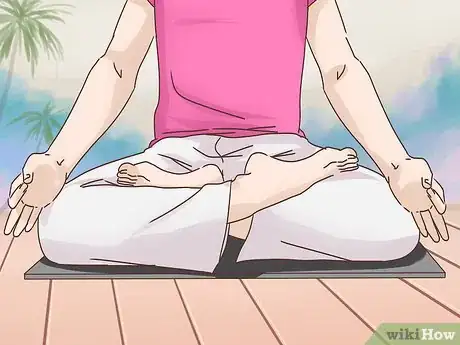

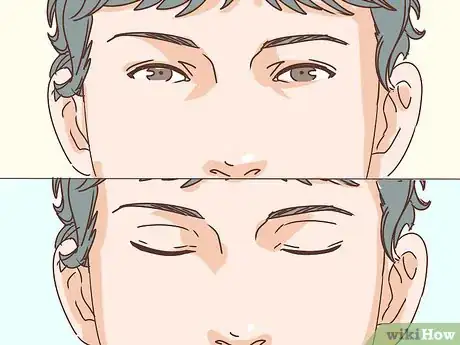

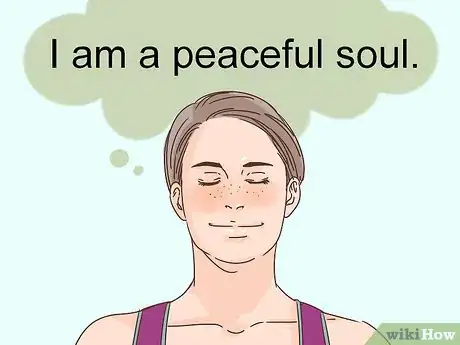
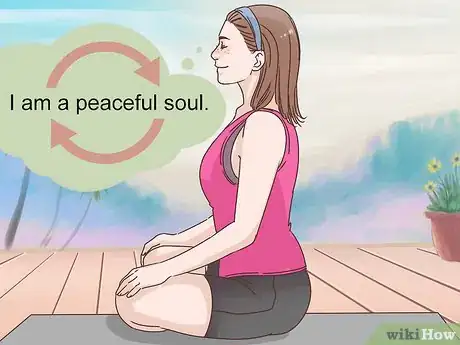
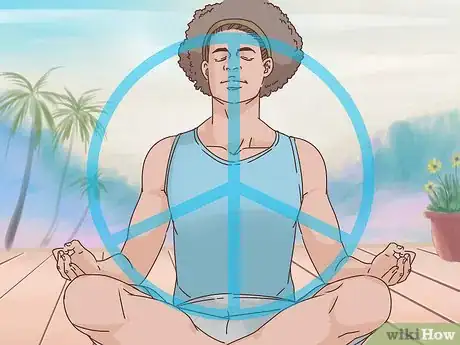
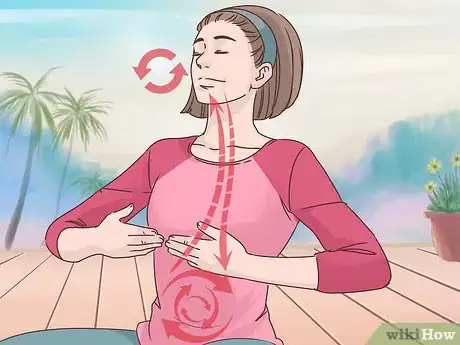
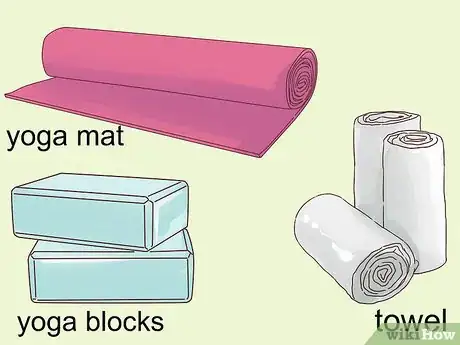
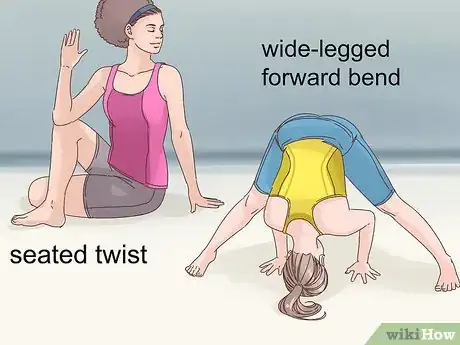
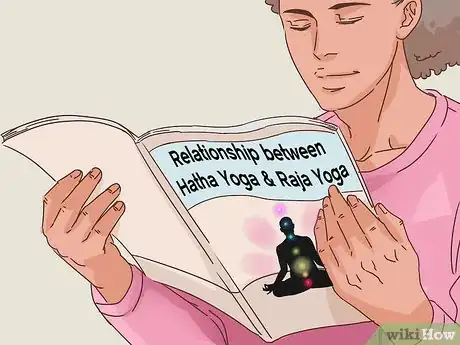


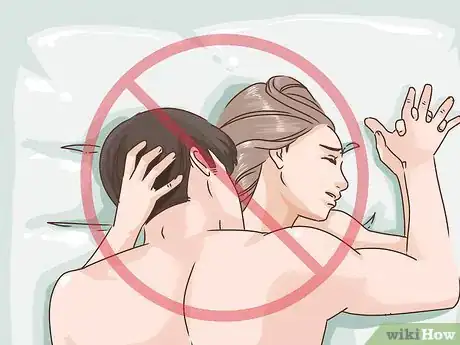
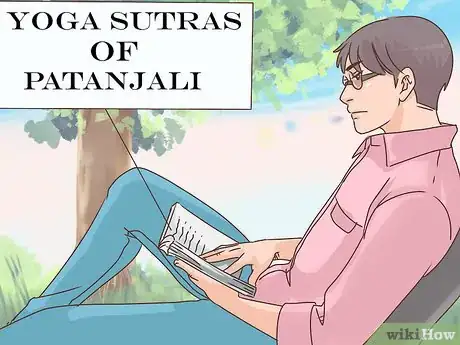
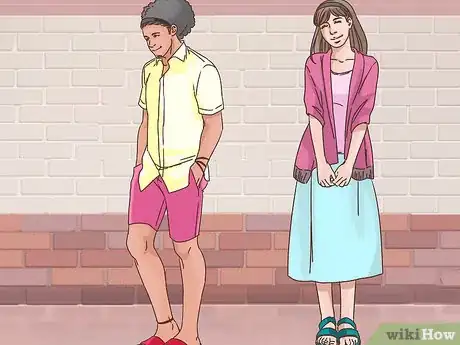








-Step-6-Version-3.webp)
















































